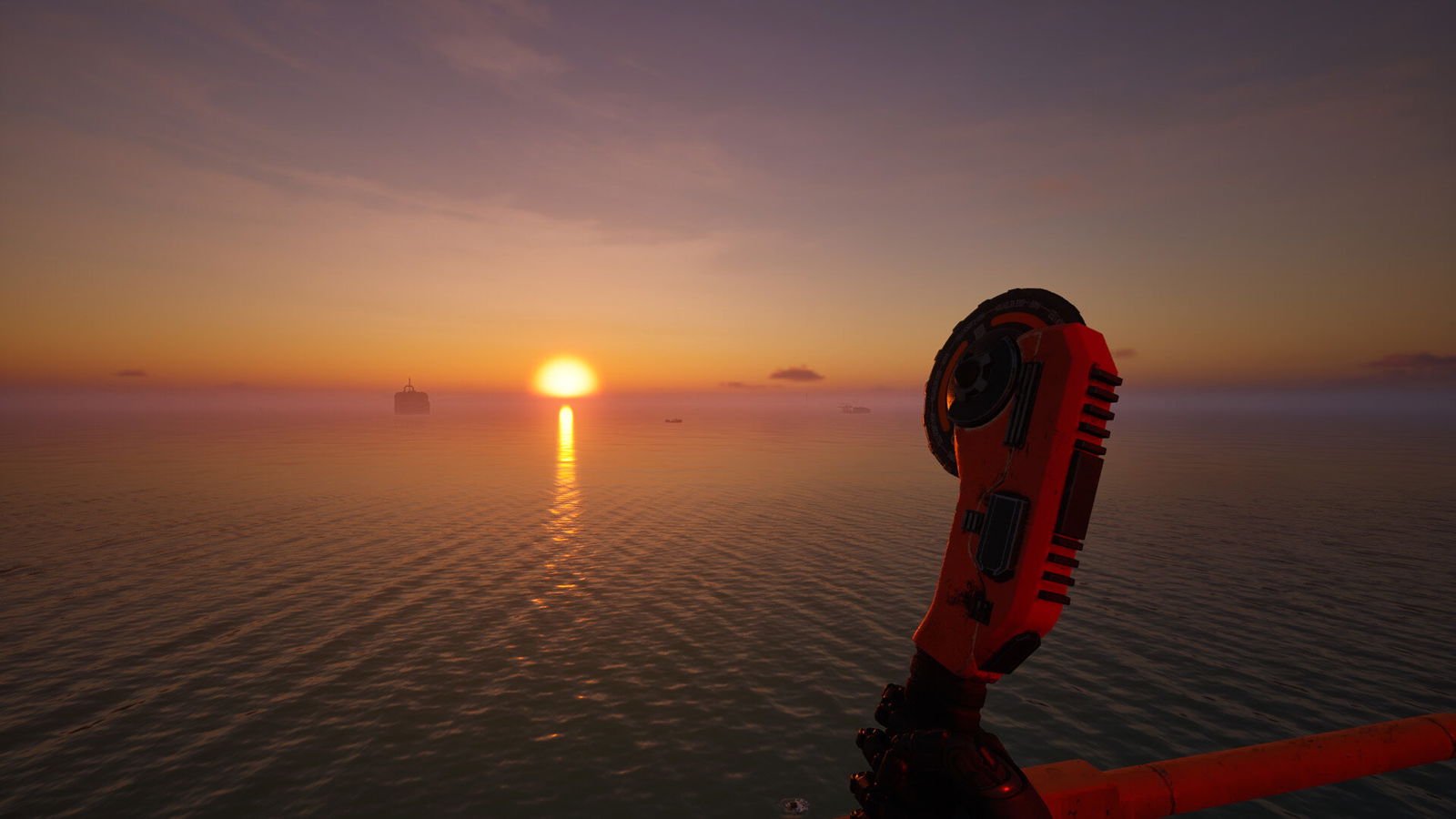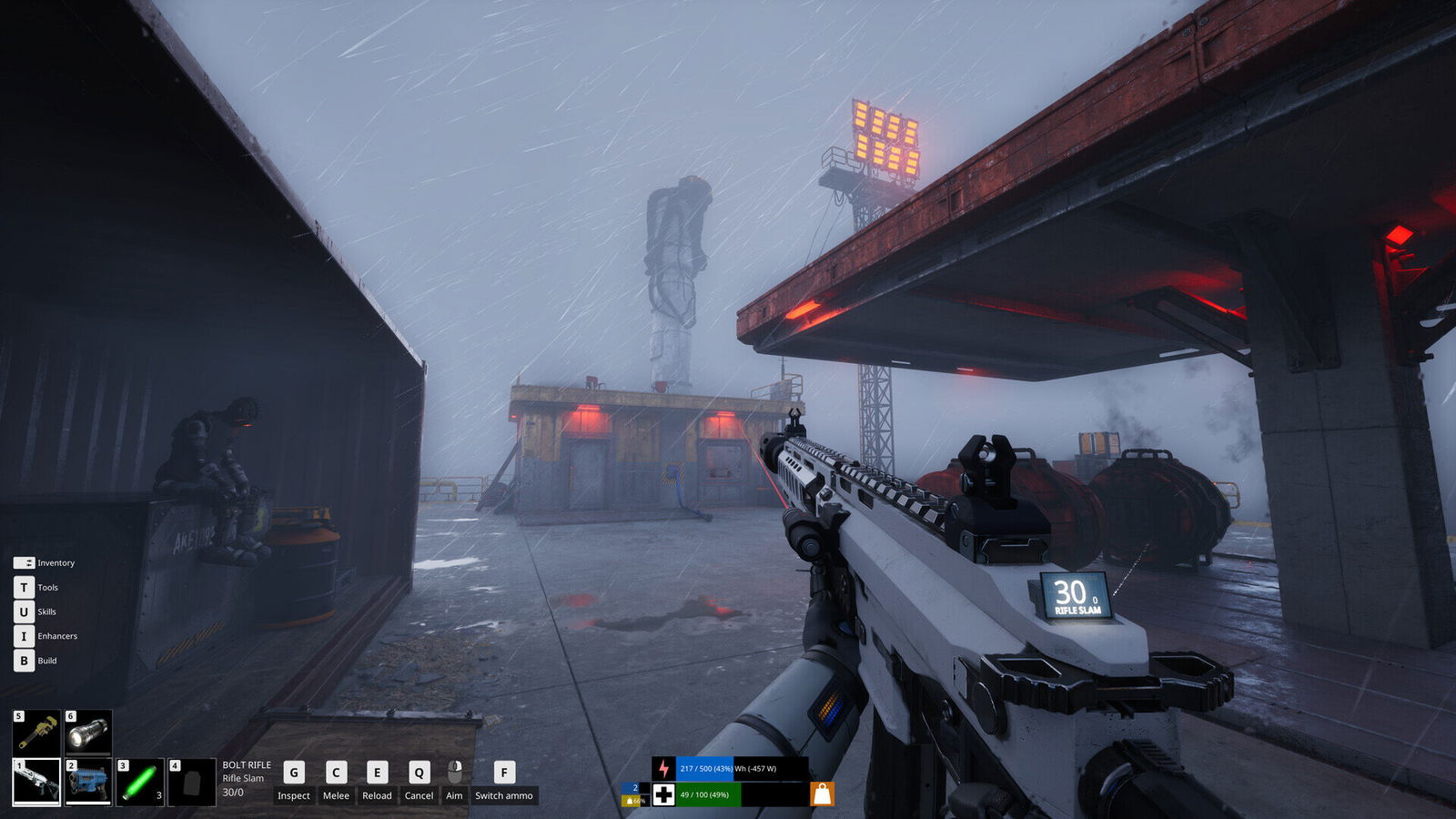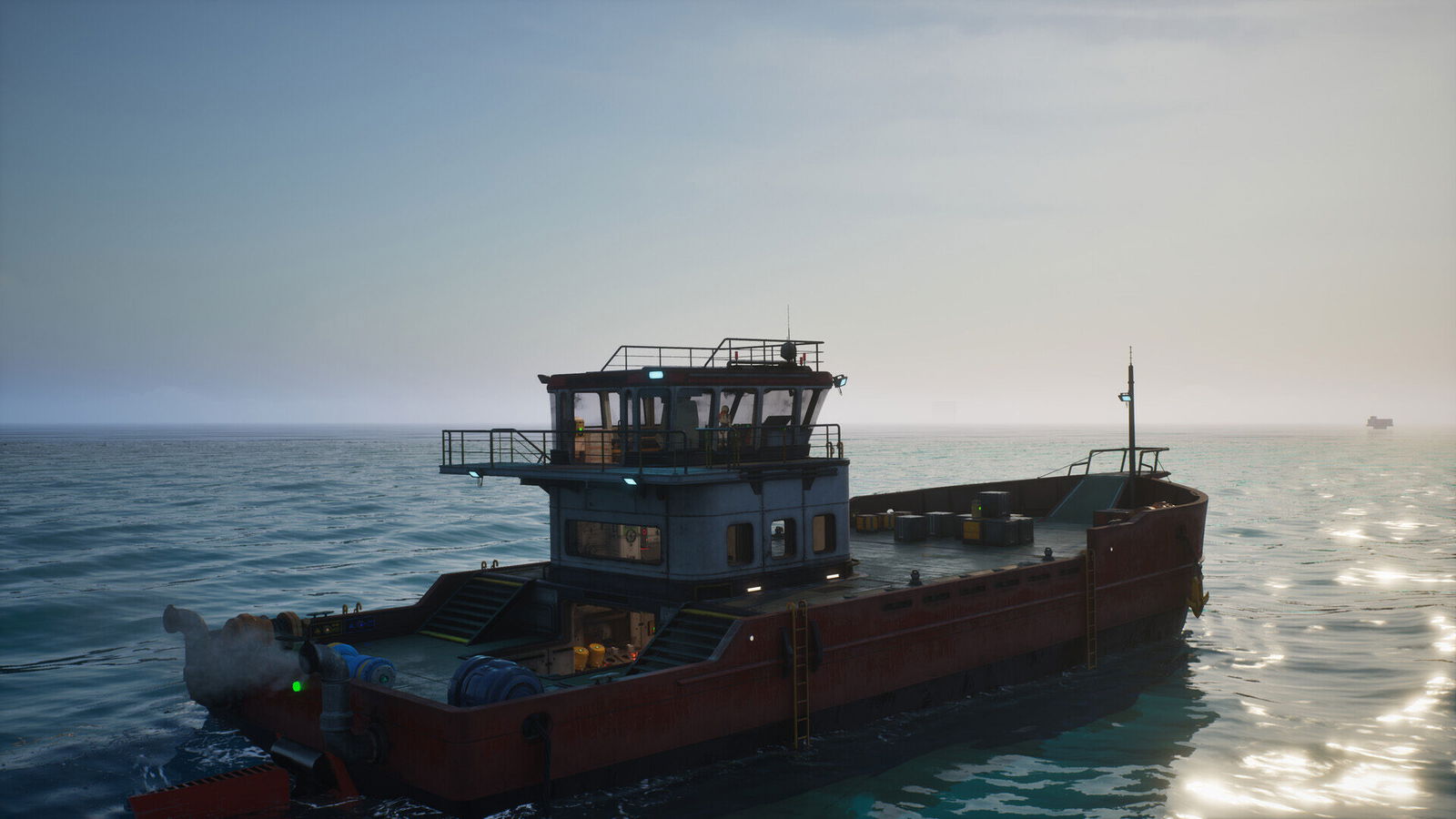When I first saw The Last Caretaker, I was honestly a little unsure what to make of it. Based on some trailers, I assumed it was a game about mechanical optimization—something in the vein of Factorio—but then it shifted to a strange survival-horror tone that felt closer to The Forest. With my curiosity piqued, I had to dive in.
I didn’t expect to be grabbed as hard as I was by The Last Caretaker. It’s a game that has such a grand sense of scale, and yet it’s so quiet and thoughtfully delivered that it almost fades into white noise, and before you know it, you’ve been playing it for hours. There’s a lot to like about The Last Caretaker, and a few kinks that need to be ironed out—good thing it’s still in Early Access.

The Last Caretaker tells a fairly simple story. Players take on the role of a robotic helper who awakens aboard a derelict rig in the middle of a vast ocean. With no apparent signs of life nearby, the player is tasked with repairing a docked boat and setting out to sea in hopes of re-establishing connections with whatever systems remain functional—and possibly saving what life is left on this flooded planet.
It’s an excellent opening, perfectly capturing the mood and tone of the game while revealing pieces of its story through interaction. The player is alone in a world that is both hostile and desolate, working diligently to preserve some small fragment of it. There’s nothing especially frightening about the experience, yet there’s a constant sense of duty—because you are, quite literally, the last one left to act.
As a robot, the player quickly grasps the methodical, repetitive rhythm of the narrative through gameplay, but in a way that feels calm and rewarding. While players are technically on the clock, there’s no real time constraint—robots don’t age. The tasks of exploration, construction and rebuilding come naturally, as though they are simply part of the Caretaker’s programming. Players are, in effect, carrying out its purpose. There are secrets to uncover about what happened to the world, and consequences for work done well or poorly, but everything unfolds so naturally that I eventually stopped paying close attention—without ever feeling detached.

Gameplay is a satisfying mix of exploration, mining and crafting, though presented in a slightly unconventional way. Players sail across vast oceans in search of structures containing objects that can be broken down into scraps to craft more useful and efficient items. Some locations require electricity to power machinery or open locked doors, and players can either scavenge for old batteries or build intricate systems to make exploration easier.
At its core, The Last Caretaker is a game about connections. One of the most important items players can find or craft is the cable, available in several types. Creating energy sources and efficiently running cables adds to the game’s technical depth, but it also serves a thematic purpose. I couldn’t help but laugh when I realized I was losing health because my battery level had dropped, and I had to plug myself into a power source.
“The Last Caretaker is the first explorative crafting game in a long time that stuck with me in the same way No Man’s Sky did.”
But The Last Caretaker is all about forging connections across a flooded world—slowly bringing it back to life by powering abandoned structures, finding ways to create artificial life, and eventually sending that life into space to give it a chance at sustained growth. The gameplay loop is so satisfying that you begin doing it almost on instinct; it becomes part of your programming.
However, The Last Caretaker also features some combat, and it’s terrible. It makes me wish it wasn’t there at all. Players start with a weak melee attack, which is inexplicably mapped to the C key on PC by default. Because most enemies are puddles of goo, hitting anything feels weightless and lacks any sense of impact. The melee hitbox is also misleading, which makes exploring hostile environments feel especially unengaging.

It isn’t long before you’re able to craft a gun, but guns themselves also feel pretty worthless—the first Electricity Gun you get drains batteries so fast you’re lucky if you can dispatch one goo pile before it’s completely empty. I feel like if The Last Caretaker wants to pull anything from No Man’s Sky, it should just give players a form of ranged weapon from the start, or SERIOUSLY deemphasize combat.
Visually, there isn’t much to say about The Last Caretaker. Its graphics are impressive but fairly standard. The game has a polished look that makes everything feel genuinely believable, using lighting and weather systems to bring the world to life and add a sense of danger. Still, it doesn’t stand out from other games built in Unreal Engine.

Audio quality is about the same. The soundtrack carries a quiet ambiance that keeps things calm, but it’s not particularly memorable. When the action starts to heat up, there’s a sense of eerie tension, but none of it stuck with me like the more distinctive themes from Minecraft or No Man’s Sky.
It’s also worth noting that since this is an Early Access build, the game is prone to minor glitches and the occasional crash. During my playthrough, simply pulling up to a structure in my boat caused the game to crash, as did opening a door to a room full of enemies, along with a few other unpredictable moments. These issues don’t make The Last Caretaker unplayable, but they are worth keeping in mind.
The Last Caretaker is the first explorative crafting game in a long time that stuck with me in the same way No Man’s Sky did. It’s exactly what I would consider a rainy day game—it has such a similar sense of style and execution that you stop playing and just vibe with it. Hopefully, some of the kinks can be ironed out for the Full Version review, but if this is what Early Access has to offer, then I’m on board.




